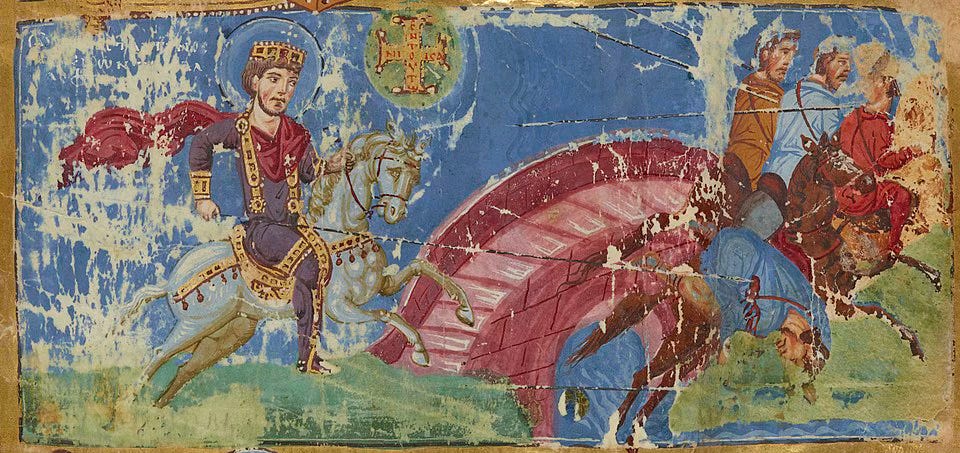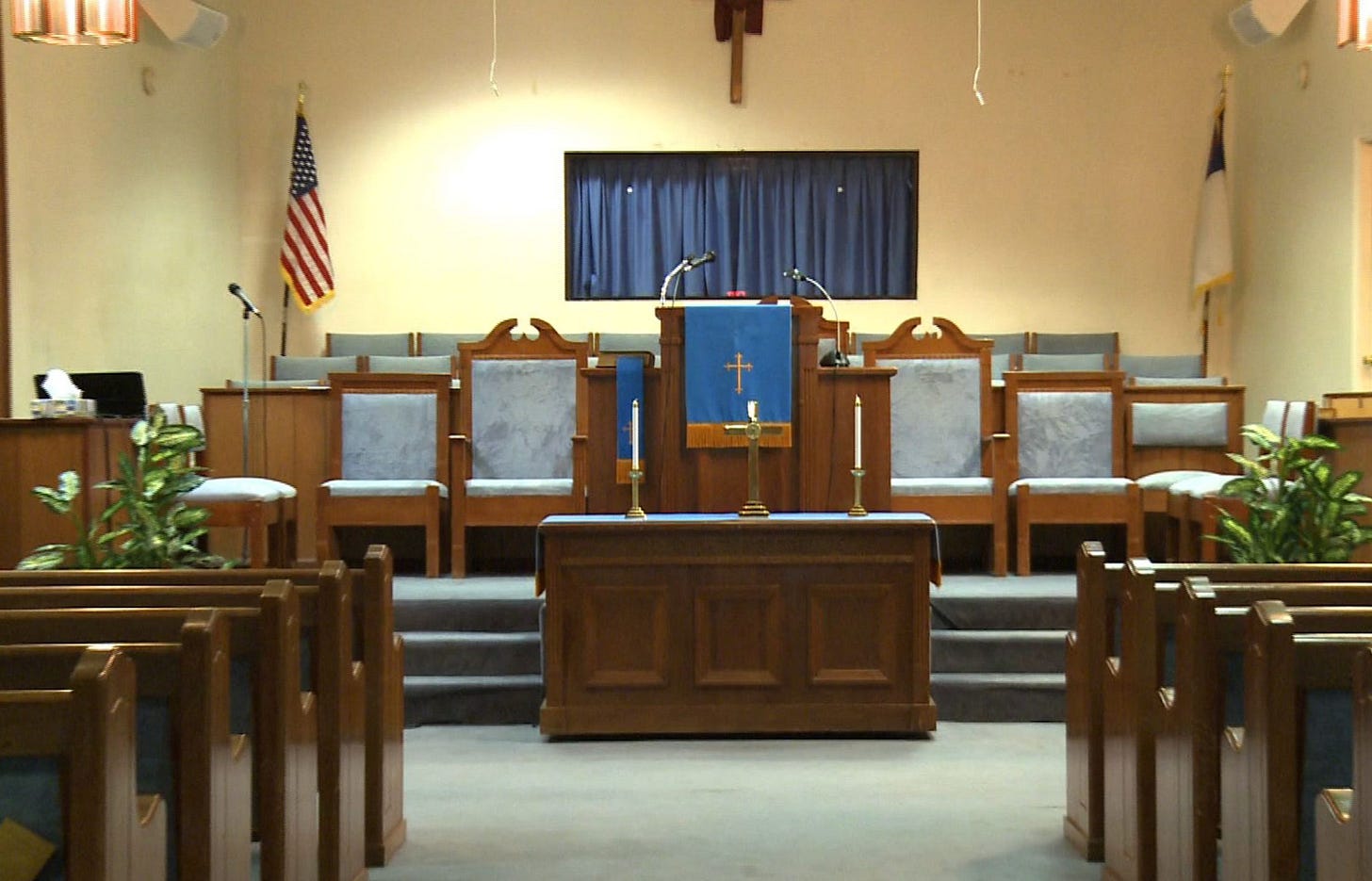Remove the Flag from the Sanctuary
Whenever I was sent to pastor a new church, one of the first things I looked for during the initial tour of the building was the American flag. If it was in the sanctuary, I made it a priority to have it removed.
Because what fellowship hath the Cross and Table with the American flag?
I learned the power of the flag in Marine Corps boot camp. It is America’s symbol — the American symbol. We were taught to salute it, to never let another flag rise higher, to never let it touch the ground, to stop whatever we were doing whenever it was raised or lowered. We even learned that according to the U.S. Flag Code (Title 4, U.S. Code § 8), it is never to be turned into clothing or decoration. Oh the irony of the Fourth of July, so many bikinis, shorts, t-shirts and hats bedecked with Old Glory!
Why were we taught this? Because the flag is a powerful symbol — one that has been given sacramental status in America! And in that sense, it has formative power.
Donald Trump knows this. It’s why he signed an executive order making flag burning punishable by one year in prison, with no early release. The message is clear, honor — reverence — the flag, or else!
It is a direct assault on the First Amendment and a deliberate challenge to the Supreme Court’s ruling in Texas v. Johnson (1989), which made clear that flag desecration is protected political speech.
Trump knows what he’s doing. He is wielding the flag, not honoring it as we were taught to. He is weaponizing a symbol to stir-up his easily stirred base.
It’s not the first time a ruler has tried to seize power by coopting a symbol. Constantine did it in the fourth century. He took the cross — once the instrument of Rome’s execution — and turned it into a battle standard.
In hoc signo vinces. “By this sign thou shalt conquer.”

And just like that, a symbol of the Suffering Servant was turned into one of God-sanctioned warfare.
In short, the cross was co-opted in the name of empire. Now Trump is doing the same with the flag: draping it over politics, using its power to sanctify his agenda.
I respect the flag. I stood at attention for it. I saluted it. I do not think anyone should burn it, but honor the rights of those who wish to.
It was my education and respect for the flag that convinced me that it does not belong in sanctuaries.
We already have symbols there — symbols that are at odds with what the Flag represents. Symbols that call us to become, not loyal Americans, but loyal citizens of the Kingdom of God. They are the Cross and the Communion Table.
These are not mere decorations, but they are formative means of grace. They teach and remind us of who we are, and whose we are. That is, people who conquer in the self-sacrificing way of Christ, and people who share his banquet with people from every nation, race, and tongue that call upon his name.
The whole scene is confused when you throw an American flag in it. It’s like having two spouses, one simply does not belong there. Because both call for your allegiance — your loyalty — and you cannot serve two masters.
As usual, Stanley Hauerwas put it bluntly: “If you worship in a church with an American flag, your salvation is in doubt.” He wasn’t joking. When the flag stands beside the Cross and Table, the story of Christ is hijacked by civil religion.
So let me be equally blunt. Pastors, take the flag out of your sanctuaries. Do it pastorally, for it truly is a powerful symbol that has taken root in the hearts of some of your parishioners. Every Veterans Day and Independence Day, I had to explain why we couldn’t feature it in worship, or pledge allegiance to it.
Teach them how to honor it, without pledging loyalty to it or what it means.
Parishioners, if there is a flag in your sanctuary, ask why it’s there. Many pastors simply have not considered the power of symbols and accept its presence as tradition — “it’s always been there.”
This is not a rant from a pastor who has picked a hill to die on. We all know how powerful the flag is. And if it is going to be weaponized and used as a sword to divide, it is incumbent upon all of us to make sure that no symbols like that inhabit the spaces we go collectively to worship God.



Best explanation I have heard for removing it. There have been fights over which side of the altar it should be on but never about removing it. That would have been worthy of the conversation. Thank you, my brother!
I’m glad you brought this up. I’ve always wondered why the American flag was there, and thought it strange or inappropriate. Nobody ever had an answer as to why it was there, only that some people had a strong opinion about its presence. If they heard your commentary, they might see things in a different light.